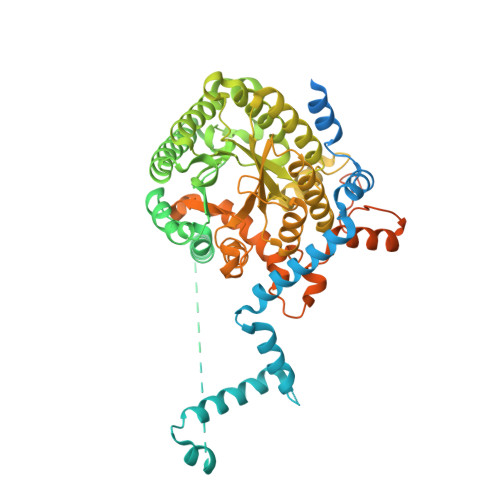Structure of the proline dehydrogenase domain of the multifunctional PutA flavoprotein.
Lee, Y.H., Nadaraia, S., Gu, D., Becker, D.F., Tanner, J.J.(2003) Nat Struct Biol 10: 109-114
- PubMed: 12514740
- DOI: https://doi.org/10.1038/nsb885
- Primary Citation of Related Structures:
4O8A - PubMed Abstract:
The PutA flavoprotein from Escherichia coli plays multiple roles in proline catabolism by functioning as a membrane-associated bi-functional enzyme and a transcriptional repressor of proline utilization genes. The human homolog of the PutA proline dehydrogenase (PRODH) domain is critical in p53-mediated apoptosis and schizophrenia. Here we report the crystal structure of a 669-residue truncated form of PutA that shows both PRODH and DNA-binding activities, representing the first structure of a PutA protein and a PRODH enzyme from any organism. The structure is a domain-swapped dimer with each subunit comprising three domains: a helical dimerization arm, a 120-residue domain containing a three-helix bundle similar to that in the helix-turn-helix superfamily of DNA-binding proteins and a beta/alpha-barrel PRODH domain with a bound lactate inhibitor. Analysis of the structure provides insight into the mechanism of proline oxidation to pyrroline-5-carboxylate, and functional studies of a mutant protein suggest that the DNA-binding domain is located within the N-terminal 261 residues of E. coli PutA.
- Department of Chemistry and Biochemistry, University of Missouri-Columbia, 65211, USA.
Organizational Affiliation:



















